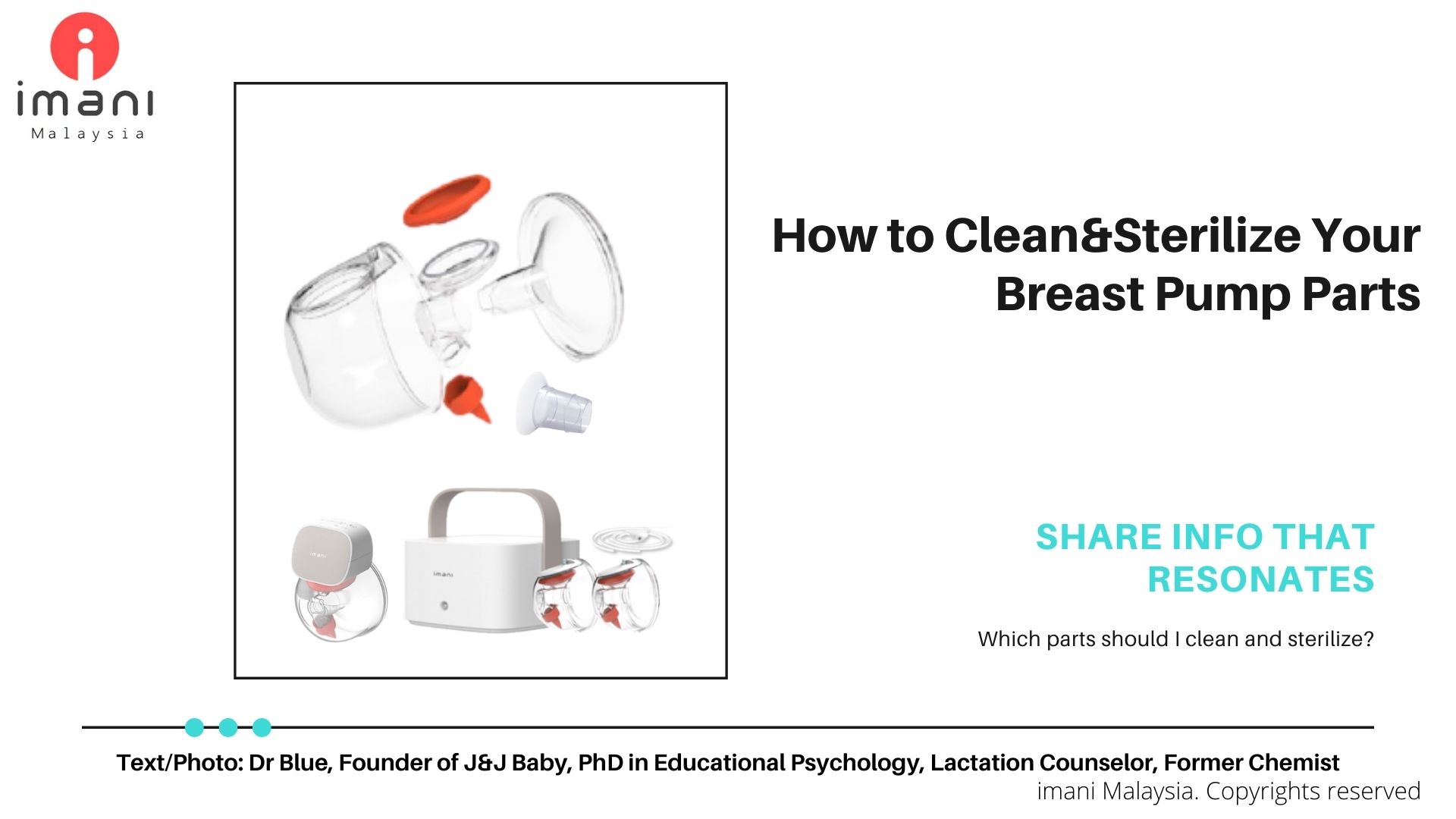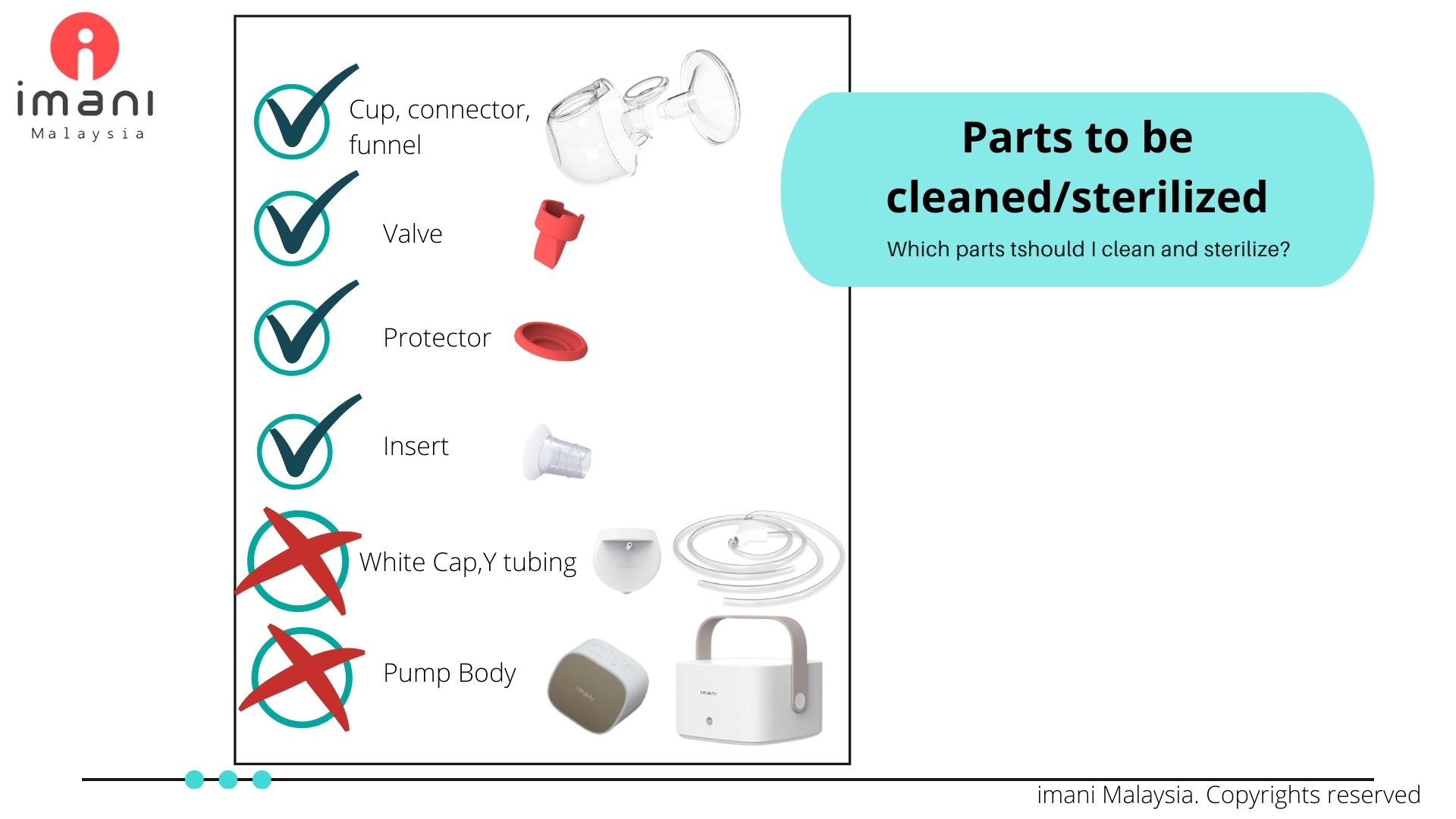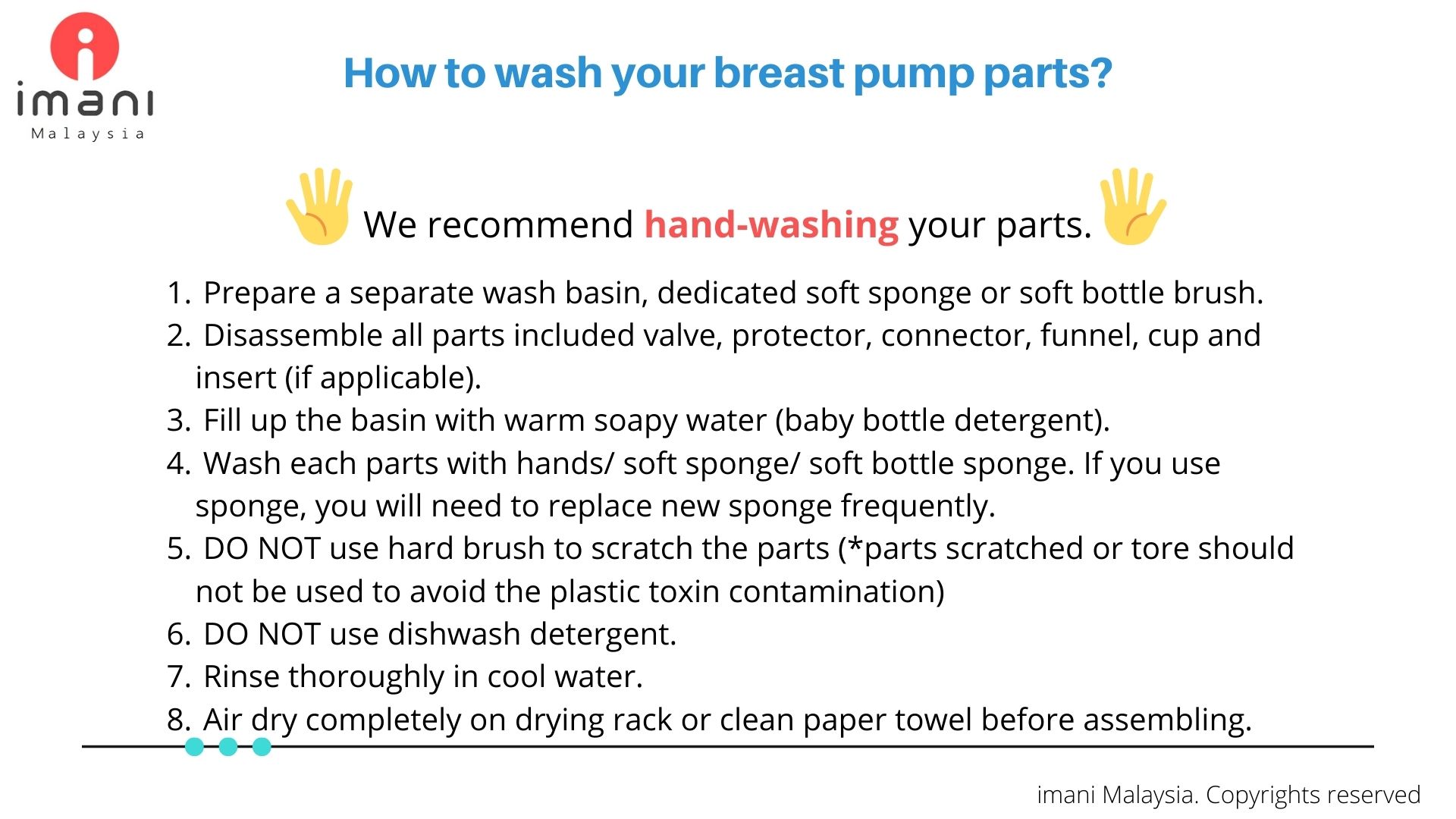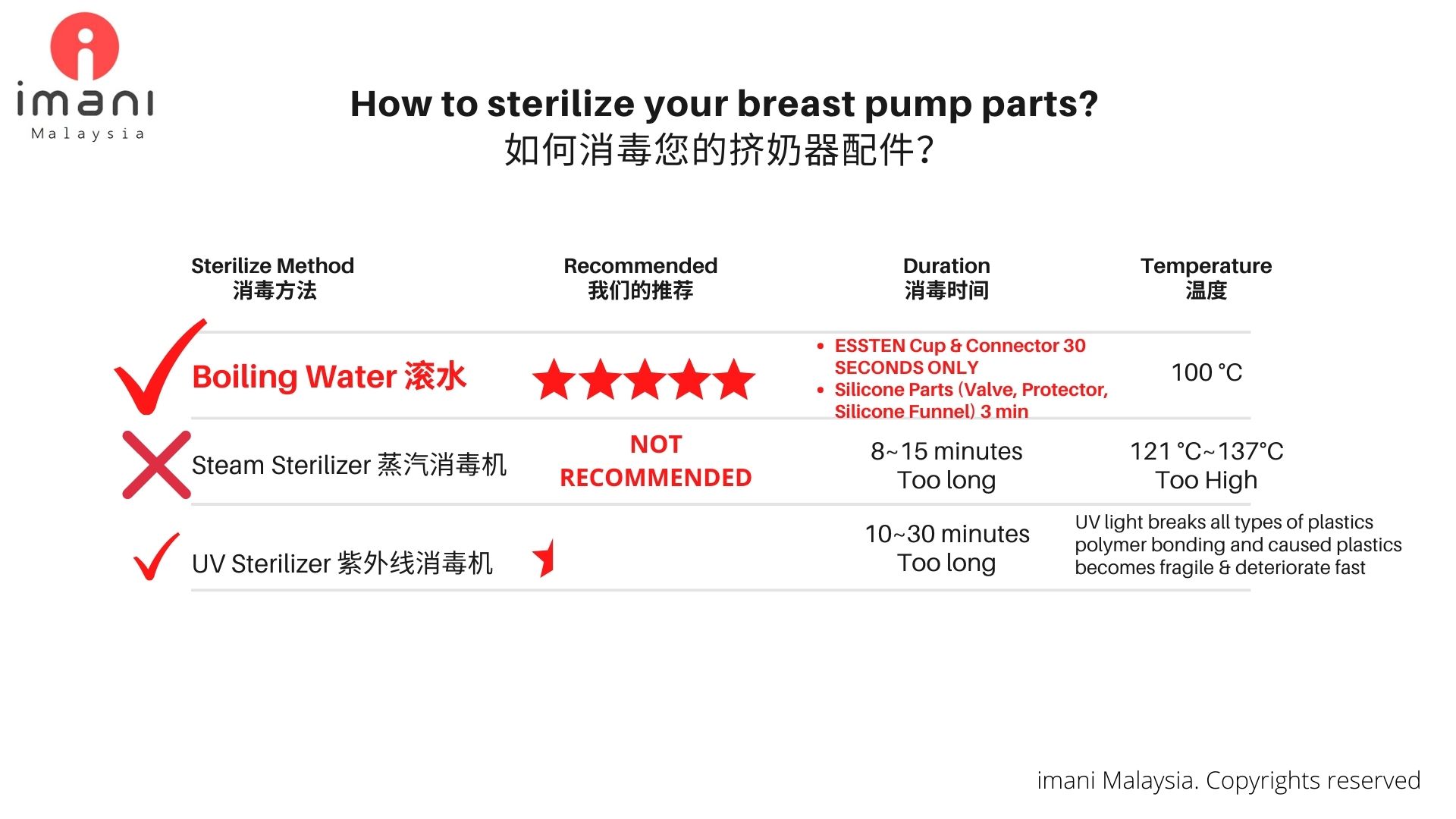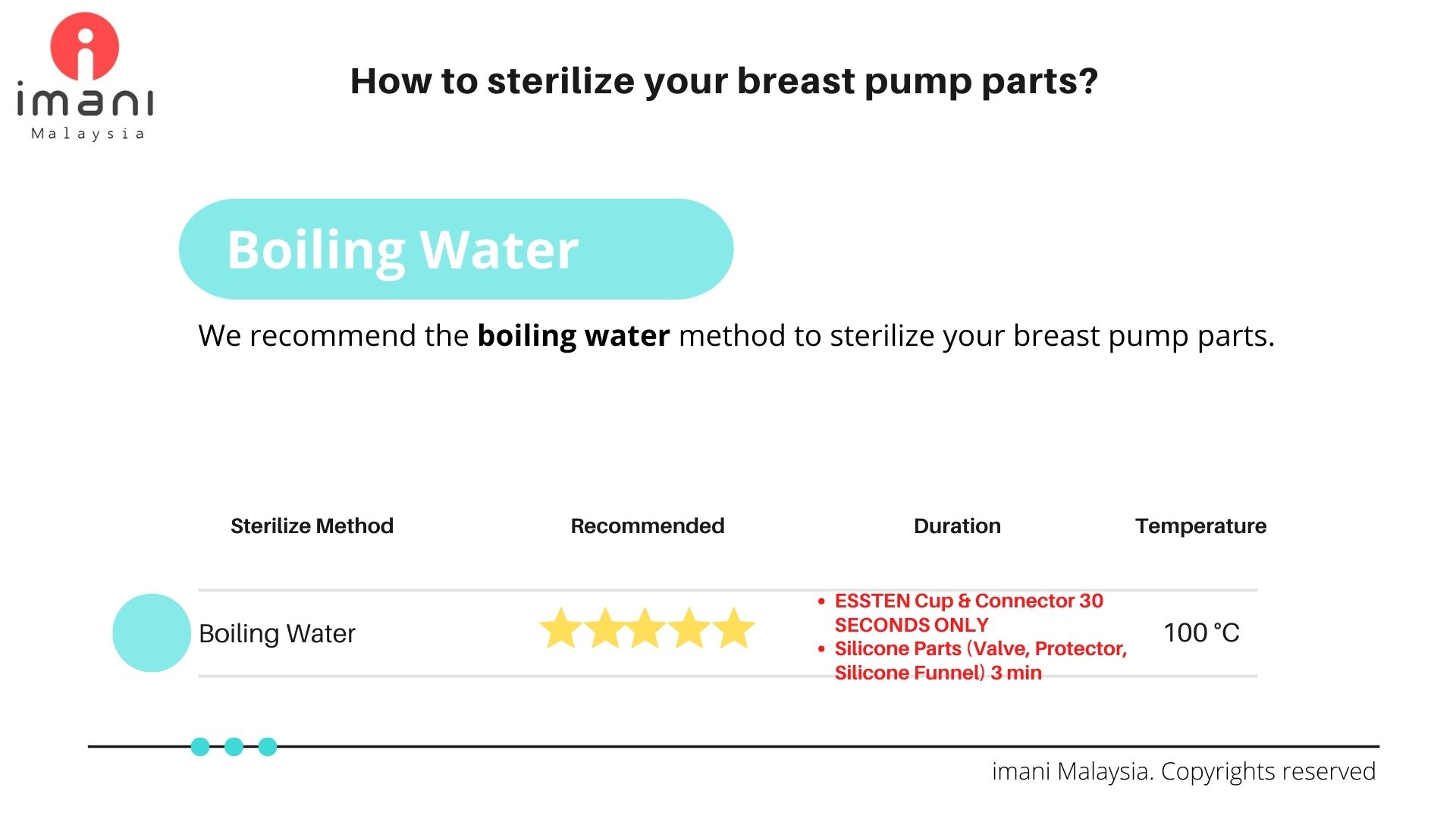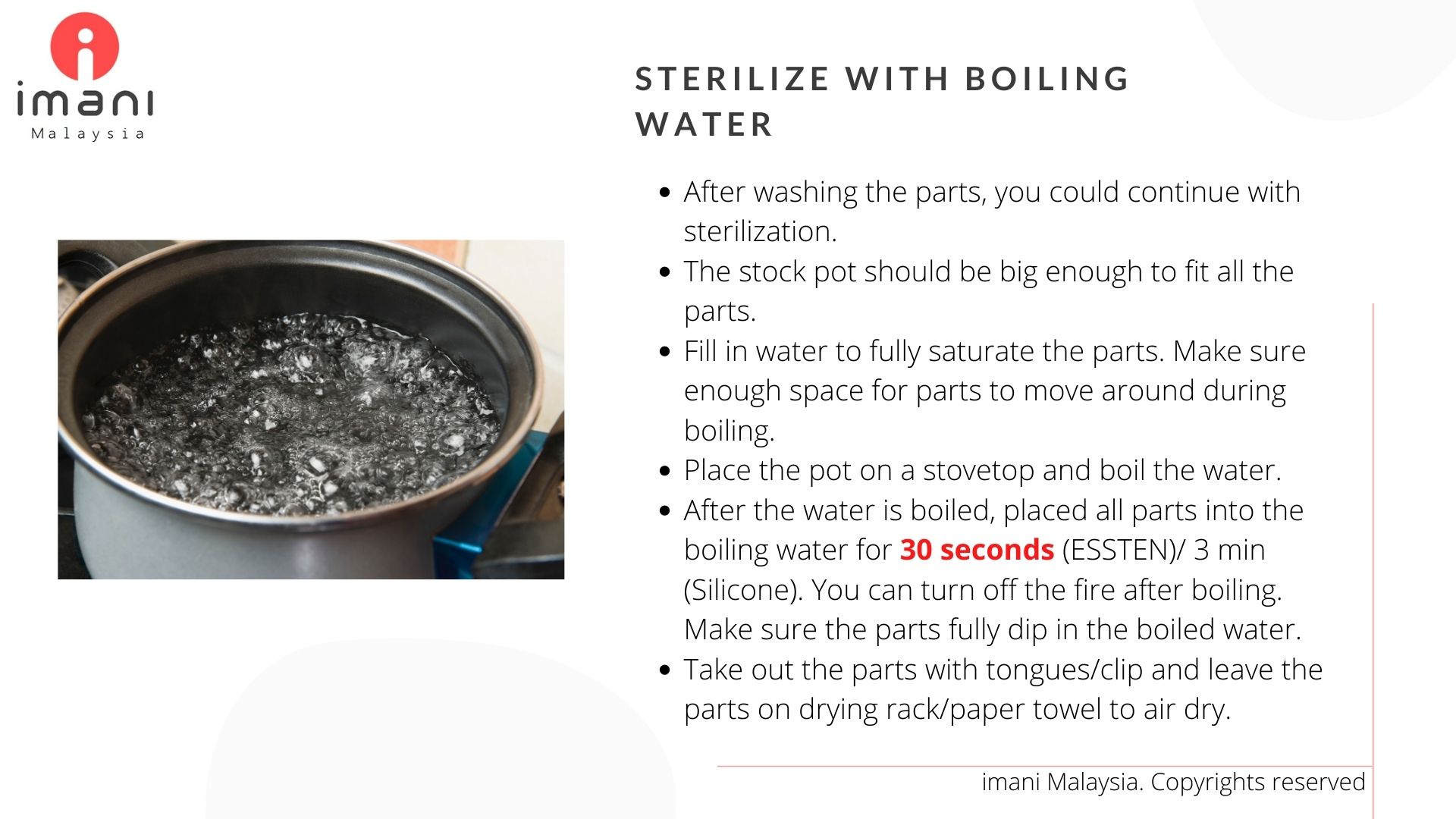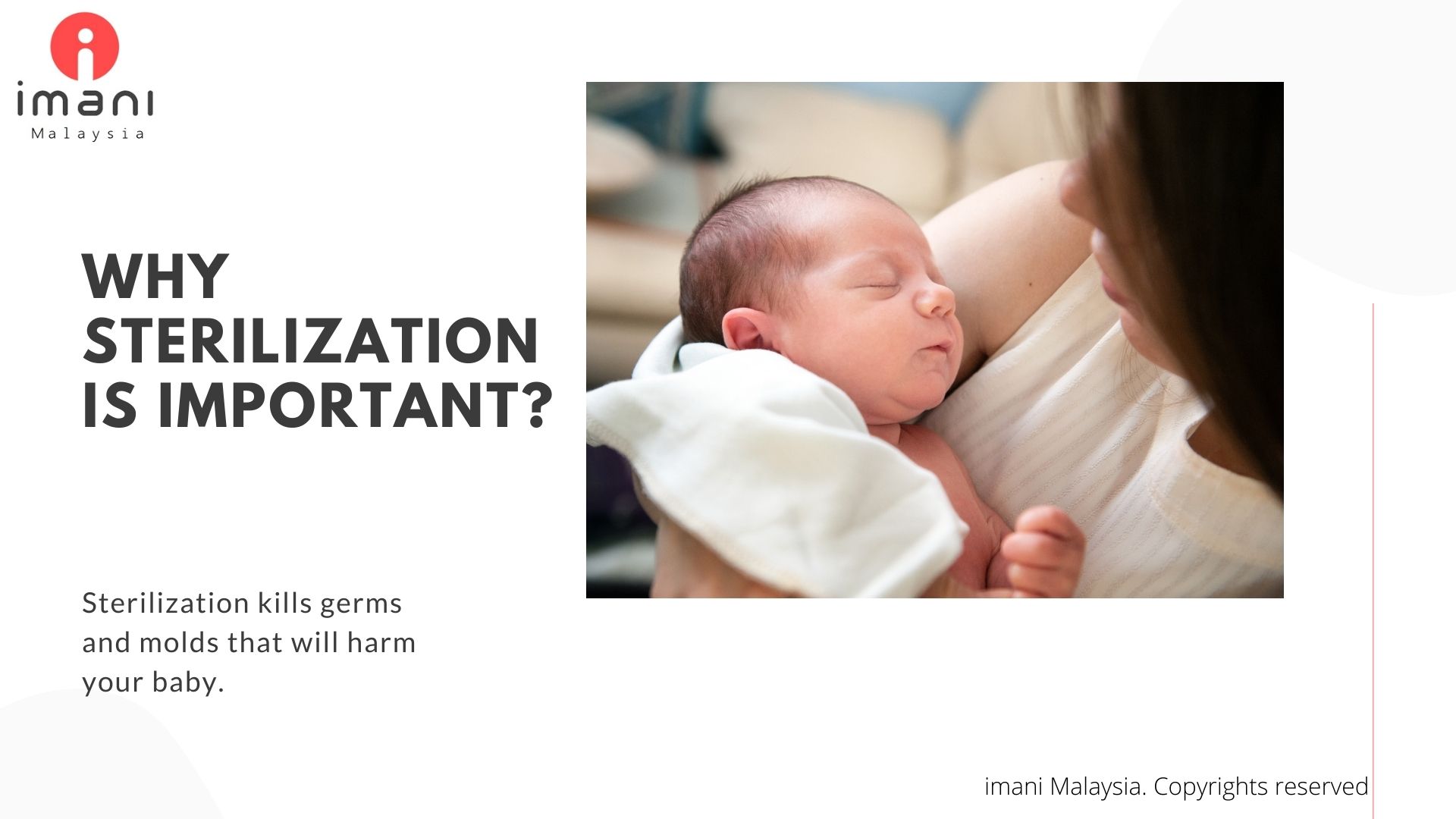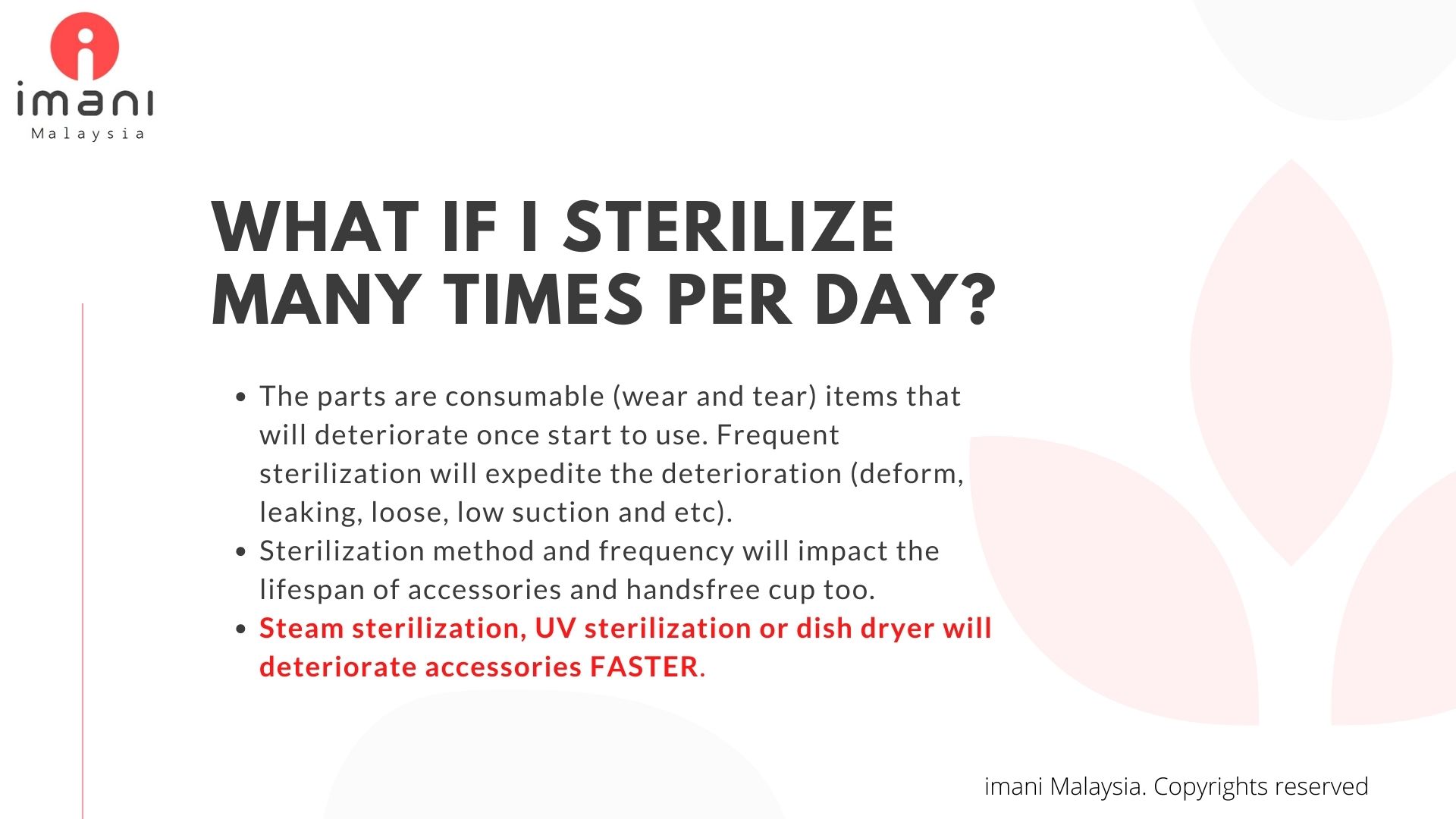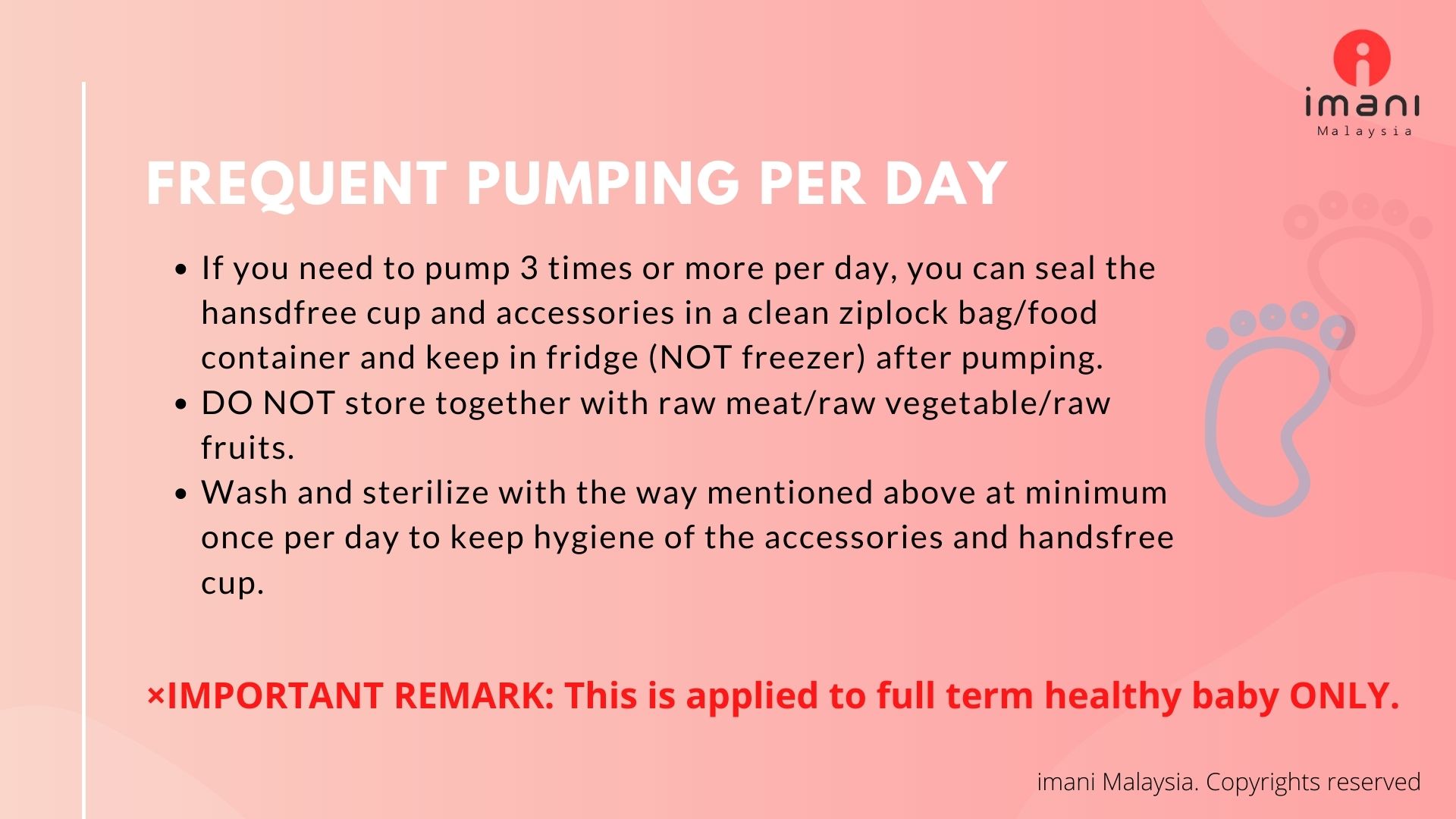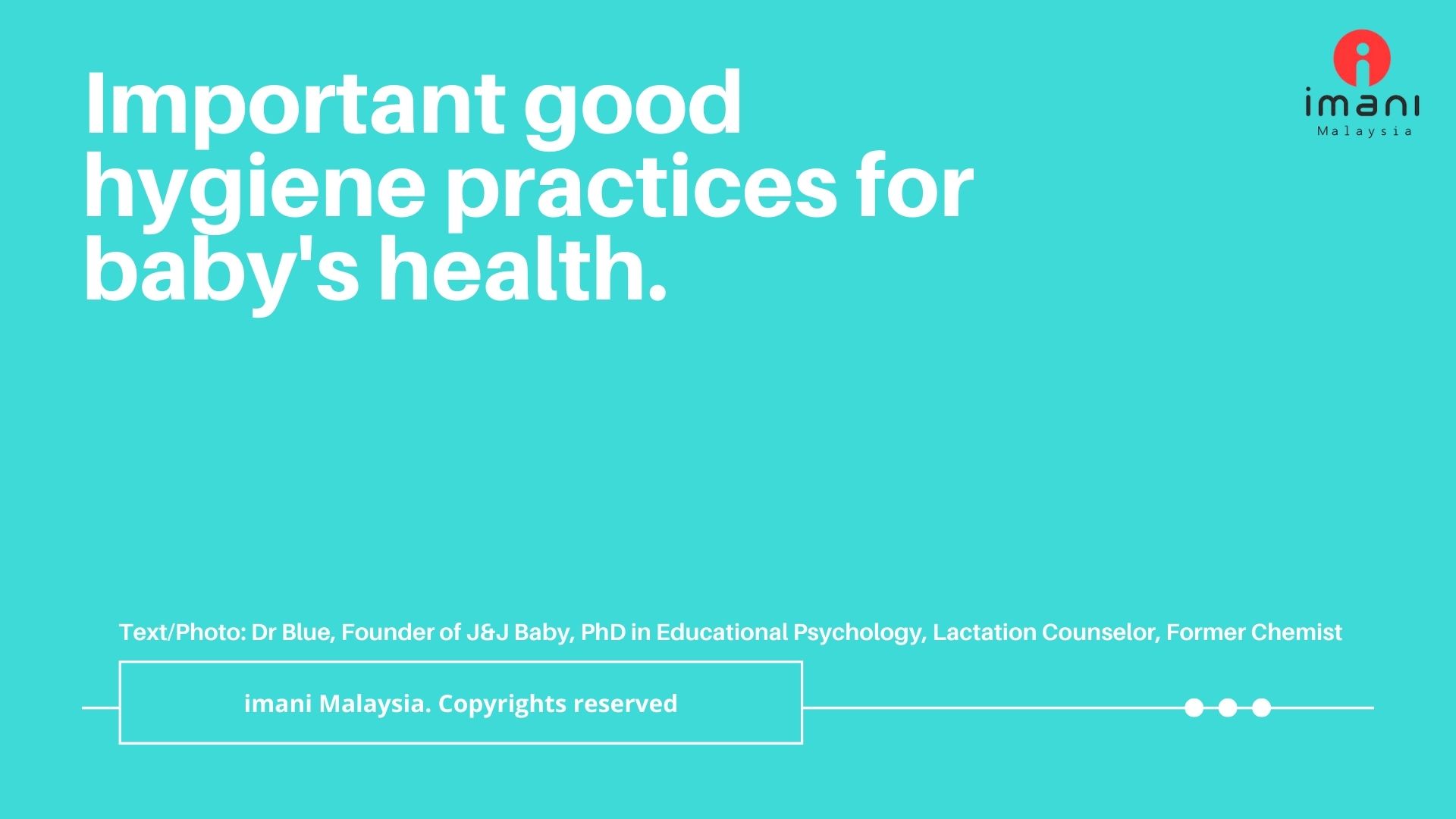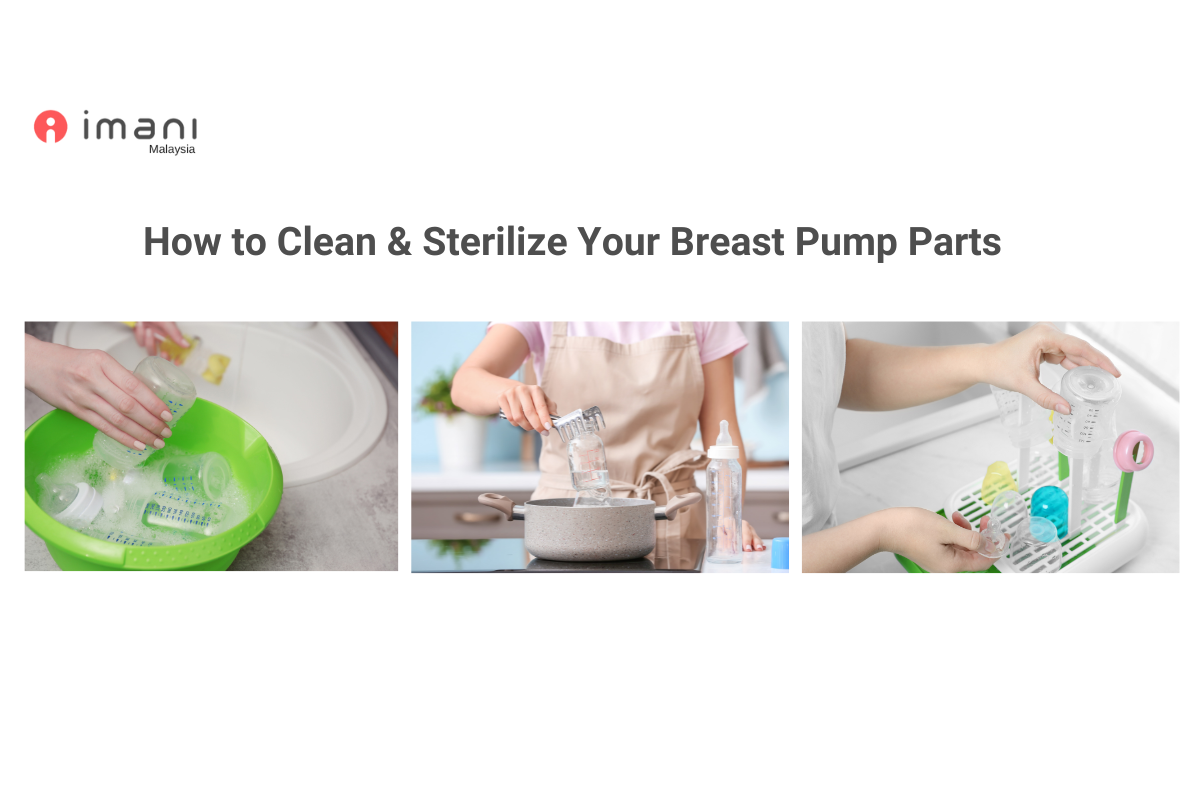Text/Photo: Dr Blue, Founder of J&J Baby, PhD in Educational Psychology, Lactation Counselor, Former Chemist
Which parts should I clean and sterilize?
- ESSTEN Cup & Connector
- Silicone parts (Valve, Protector, Silicone Funnel, Insert)
Prepare for First Time Use
- You need to wash and sterilize parts that come in contact with your baby’s milk.
- This includes the valve, protector, connector, funnel, cup and insert (if you have it).
- Make sure you fully disassemble the valve, protector, conenctor, funnel and cup prior to wash and sterilisation.
- DO NOT sterilise the tubing or pump body. Getting the tubing wet can cause damage to the motor and causes mould, mildew and bacteria to grow.
How to wash your breast pump parts?
We recommend hand-washing your breast pump parts.
- Prepare a separate wash basin, dedicated soft sponge or soft bottle brush.
- Disassemble all parts included valve, protector, connector, funnel, cup and insert (if applicable).
- Fill up the basin with warm soapy water (baby bottle detergent).
- Wash each parts with hands/ soft sponge/ soft bottle sponge. If you use sponge, you will need to replace new sponge frequently.
- DO NOT use hard brush to scratch the parts (*parts scratched or tore should not be used to avoid the plastic toxin contamination)
- DO NOT use dishwash detergent.
- Rinse thoroughly in cool water.
- Air dry completely on drying rack or clean paper towel before assembling.
How to sterilize your breast pump parts?
We recommend the boiling water method to sterilize your breast pump parts.
- ESSTEN Cup & Connector : 30 seconds
- Silicone Parts (Valve, protector, silicone funnel, insert) : 3 minutes
Why Sterilization is Important?
Sterilization kills germs and molds that will harm your baby.
What if I sterilize many times per day?
- The parts are consumable (wear and tear) items that will deteriorate once start to use. Frequent sterilization will expedite the deterioration (deform, leaking, loose, low suction and etc).
- Sterilization method and frequency will impact the lifespan of accessories and handsfree cup too.
- Steam sterilization, UV sterilization or dish dryer will deteriorate accessories FASTER.
Frequent pumping per day
- If you need to pump 3 times or more per day, you can seal the hansdfree cup and accessories in a clean ziplock bag/food container and keep in fridge (NOT freezer) after pumping.
- DO NOT store together with raw meat/raw vegetable/raw fruits.
- Wash and sterilize with the way mentioned above at minimum once per day to keep hygiene of the accessories and handsfree cup.
- IMPORTANT: Breastmilk contains natural milk fat, which is oily and sticky. When stored in the fridge, the silicone funnel and cup become wet and slippery due to condensation and the chemical nature of silicone.
- So what happens next? You pump, but the handsfree cup won’t stay secure. They slip and open by their own. You get frustrated.
And then… some blame the pump quality. 🙄 - Let’s clear that up:
🧴 This is NOT because of "lousy" quality. It's basic physics and biology – your milk fat + silicone = slippery parts.
📌 Solution: Just take 5 seconds to wipe the silicone funnel and cup with a clean dry towel or tissue before use. Done. Safe. Secure.
👉 Common sense + simple care = smooth pumping session
- ×IMPORTANT REMARK: This storage and care tip applies to full-term, healthy babies only.
Important good hygiene practices for baby's health.
Important good hygiene practices for baby's health.
